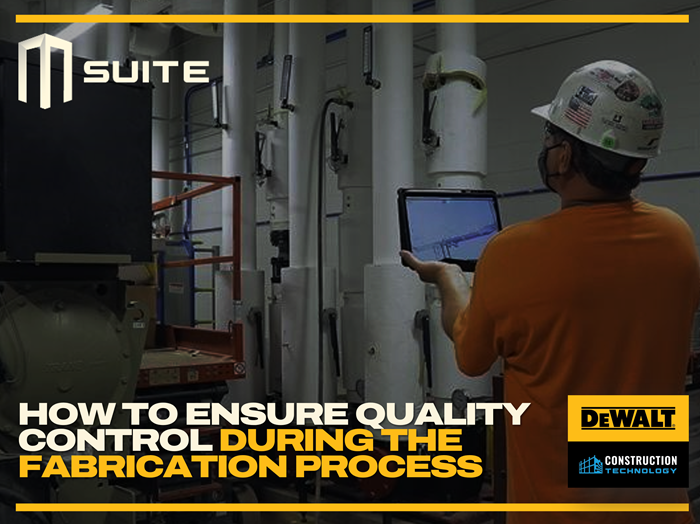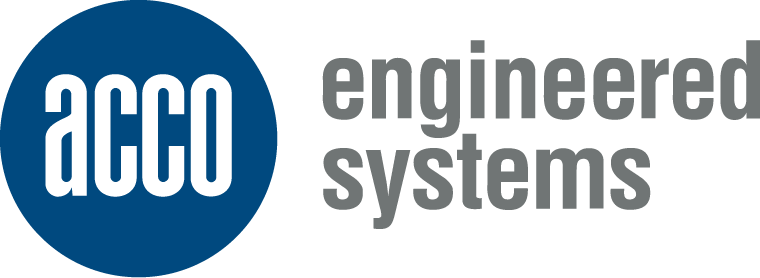Introduction
For MEP and industrial contractors, quality control in construction means more than just meeting specifications. The focus is on protecting profits, ensuring safety, and maintaining a good reputation. Poor quality management leads to rework, schedule delays, material waste, and even costly disputes. According to McKinsey & Company, construction rework can consume up to 5–10% of a project’s total costs (source).
In a world of complex projects and fast delivery schedules, contractors need effective strategies and tools. These help ensure quality control in design, fabrication, and the field. Let’s look at the best practices that MEP and industrial contractors can use. We will also see how connected platforms like MSUITE can help teams follow these practices consistently.
1. Start with a Robust Quality Management Plan
Every project should begin with a documented Quality Management Plan (QMP). This plan outlines inspection requirements, tolerances, responsibilities, and reporting processes. For MEP and industrial projects, it should also cover:
- Fabrication shop inspection procedures
- Field installation tolerances for piping, ductwork, and electrical systems
- Required certifications for welders and technicians
- Coordination standards for BIM and VDC workflows
A clear QMP ensures all stakeholders—from project managers to shop leads—understand expectations from day one.
2. Standardize Workflows Across Shop and Field
Inconsistent workflows are one of the leading causes of quality issues. If fabrication shops, detailers, and field crews use different processes or documentation, errors slip through.
Standardization means aligning every stage:
- BIM-to-FAB handoff with consistent spool sheets and part labeling
- Inspection checklists that travel with assemblies
- Digital sign-offs to verify that tasks are complete and compliant
When everyone follows the same playbook, quality improves—and disputes decrease.
3. Use Prefabrication to Reduce Onsite Variability
MEP and industrial contractors are increasingly using prefabrication to drive quality. Work completed in controlled shop environments typically yields better results than onsite installation, where conditions are unpredictable.
By prefabbing piping racks, modular skids, or sheet metal duct banks, contractors can:
- Reduce installation errors
- Improve weld and joint quality
- Lower exposure to safety risks on congested jobsites
The key is to make sure that prefab assemblies match the design plan. This needs close collaboration between the VDC and shop teams.
4. Conduct Regular Inspections and Testing
Quality control depends on verification, not assumption. MEP and industrial teams should establish inspection points throughout the workflow, including:
- Incoming material checks (dimensions, mill certifications, coatings)
- In-process inspections (fit-up, weld quality, fastener torque)
- Final QA/QC reviews before shipping or installation
Non-destructive testing (NDT), pressure testing, and visual inspections should be standard steps for mechanical and industrial systems.
5. Leverage Technology for Documentation
Paper checklists and spreadsheets are prone to errors and delays. Digital solutions streamline the process of documenting inspections, approvals, and compliance requirements for teams.
Platforms like MSUITE enable contractors to:
- Track production progress in real time
- Store digital inspection records in one location
- Share updates instantly between shop and field teams
This documentation not only ensures quality but also provides evidence if audits or disputes arise.
6. Train and Certify Your Workforce
Even the best processes fail without skilled labor. MEP and industrial contractors should invest in:
- Ongoing safety and quality training
- Certification programs for welders, pipefitters, and electricians
- Cross-training so crews understand both fabrication and field requirements
A well-trained workforce reduces rework and strengthens accountability.
7. Align Quality Metrics with Project KPIs
You can’t manage quality without measurement. Contractors should align quality metrics with broader project KPIs, such as:
- Rework rate (%)
- On-time delivery of assemblies
- Pass/fail inspection ratios
- Cost of quality (as % of total project costs)
Dashboards, such as those available in MSUITE, make most of these metrics visible across teams, enabling managers to identify issues early.
8. Foster Collaboration Between Design, Shop, and Field
Miscommunication is a leading cause of quality failures. Creating a culture of collaboration helps teams solve problems before they become costly.
Best practices include:
- Weekly coordination meetings between VDC, fabrication, and field leaders
- Real-time sharing of drawing updates and spool revisions
- Transparent reporting of inspection results
Digital platforms break down silos by providing everyone with access to the same data.
9. Prioritize Safety as a Quality Standard
Safety and quality go hand in hand. Poor-quality fabrication or installation often creates hazards, while unsafe practices compromise quality. Tracking safety incidents alongside quality metrics reinforces the message that both are non-negotiable.
OSHA highlights that proactive safety management reduces both accidents and production delays (source).
10. Continuously Improve Through Feedback Loops
Quality control isn’t a one-time effort—it’s an ongoing process. Contractors should create feedback loops between completed projects and upcoming work.
Leaders can look at inspection results, rework logs, and throughput data. This helps them find recurring issues. They can then take steps to prevent these problems. Tools like MSUITE make it easier to capture this data across multiple projects, turning lessons learned into best practices.
Why Technology Helps
While people and processes drive quality, technology ensures consistency and visibility. MSUITE helps MEP and industrial contractors by:
- Delivering up-to-date analytics on productivity and quality
- Tracking material, labor, and inspection workflows from BIM to the field
- Enabling digital documentation that reduces paper errors
- Connecting shop, field, and office teams in one platform
By combining proven best practices with modern tools, contractors can meet higher quality standards while reducing waste and risk.
The Backbone of Project Success
Quality control in construction is the backbone of project success. MEP and industrial contractors need a structured approach that includes planning, standardization, inspections, training, and collaboration.
The most effective teams measure what matters, document consistently, and learn from every project. By using these best practices with tools like MSUITE, contractors can make sure quality is not just a checkbox. Instead, it becomes a competitive advantage.
Frequently Asked Questions (FAQs)
What is quality control in construction?
- Quality control in construction ensures that work meets the specified requirements, codes, and safety standards. It includes inspections, testing, and documentation throughout the project.
Why is quality control necessary for MEP contractors?
- MEP systems are crucial to a building’s overall performance. Poor quality leads to rework, safety hazards, and system failures, making rigorous QA/QC essential.
How can fabrication shops improve quality control?
- By standardizing workflows, inspecting materials, tracking KPIs, and using digital dashboards to ensure consistent results across all projects.
What role does technology play in quality management?
- Technology enables real-time tracking, digital documentation, and collaboration between shop and field teams, reducing errors and improving accountability.









